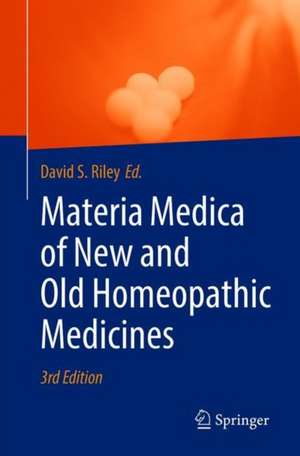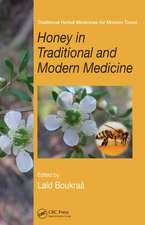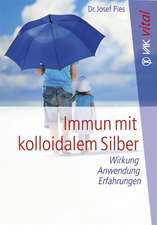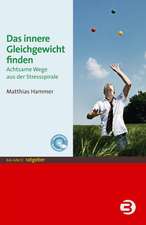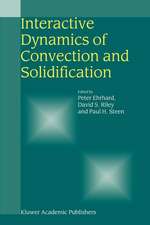Materia Medica of New and Old Homeopathic Medicines
Editat de David S. Rileyen Limba Engleză Paperback – 20 aug 2022
Preț: 353.50 lei
Preț vechi: 372.11 lei
-5% Nou
Puncte Express: 530
Preț estimativ în valută:
67.65€ • 73.46$ • 56.83£
67.65€ • 73.46$ • 56.83£
Carte tipărită la comandă
Livrare economică 18-24 aprilie
Preluare comenzi: 021 569.72.76
Specificații
ISBN-13: 9783030659196
ISBN-10: 3030659194
Pagini: 314
Ilustrații: XXI, 314 p. 5 illus. in color.
Dimensiuni: 155 x 235 x 19 mm
Greutate: 0.57 kg
Ediția:3rd ed. 2022
Editura: Springer International Publishing
Colecția Springer
Locul publicării:Cham, Switzerland
ISBN-10: 3030659194
Pagini: 314
Ilustrații: XXI, 314 p. 5 illus. in color.
Dimensiuni: 155 x 235 x 19 mm
Greutate: 0.57 kg
Ediția:3rd ed. 2022
Editura: Springer International Publishing
Colecția Springer
Locul publicării:Cham, Switzerland
Cuprins
Homeopathic drug provings.- Acidum alpha-ketoglutaricum.- Acidum alpha-lipoicum.- Acidum ascorbicum.- Acidum cis-aconiticum.- Acidum citricum.- Acidum fumaricum.- Acidum malicum.- Acidum oroticum.- Acidum succinicum.- Adenosinum monohydrogen phosphoricum (cAMP).- Adenosinum triphosphoricum (ATP).- Agnus castus.- Anthrachinonum.- Arteria suis.- Ascophyllum nodosum.- Bacterium coli.- Baryta oxalsuccinicum.- Benzochinonum, para.- Bryonia alba.- Bryonia dioica.- Calendula officinalis.- Cardiospermum halicacabum.- Cartilago suis.- Caulophyllum thalictroides.- Cerebrum suis.- Coenzymum A.- Colocynthis.- Cuprum formicicum.- Cyanocobalaminum.- Cysteinum.- Discus intervertebralis suis.- Embryo suis.- Fucus vesiculosus.- Fumaria officinalis.- Funiculus umbilicalis suis.- Galphimia glauca.- Geranium robertianum.- Glandula suprarenalis suis.- Glyoxalum.- Hepar suis.- Hydrochinonum.- Hypophysis suis.- Hypothalamus suis.- Kalium tetraiodobismutatum.- Levothyroxinum.- Luffa operculata.- Magnesium gluconicum.- Magnesium oroticum.- Mahonia aquifolium.- Manganum phosphoricum.- Medulla ossis suis.- Methylglyoxalum.- Mucosa nasalis suis.- Mucosa suis.- Myosotis arvensis.- Nadidum.- Naphthochinonum.- Natrium oxalaceticum.- Natrium pyruvicum.- Nicotinamidum.- Okoubaka aubrevillei.- Oleander.- Oleum pini.- Oxalis acetosella.- Pancreas suis.- Pelargonium sidoides.- Placenta suis.- Pyridoxinum hydrochloricum.- Riboflavinum.- Sinusitisinum.- Staphylococcus nosode.- Streptococcus nosode.- Symphytum officinale.- Terebinthina laricina.- Thiaminum hydrochloricum.- Tormentilla.- Trichinoylum.- Tuba uterina suis.- Ubichinonum.- Urtica urens.- Uterus suis.- Vena suis.- Veronica officinalis.- Zincum aceticum.- Zincum gluconicum.- Appendix .
Notă biografică
David S. Riley MD
Editor of The Permanente Journal as well as the Integrative Medicine: A Clinician’s Journal.Co-Founder, Integrative Medicine Institute, Portland/USA, and Adjunct Professor, Helfgott Research Institute at the National University of Natural Medicine (NUNM), Portland/USA.
Editor of The Permanente Journal as well as the Integrative Medicine: A Clinician’s Journal.Co-Founder, Integrative Medicine Institute, Portland/USA, and Adjunct Professor, Helfgott Research Institute at the National University of Natural Medicine (NUNM), Portland/USA.
Textul de pe ultima copertă
Materia Medica of New and Old Homeopathic Medicines
David S. Riley’s interest in the research and subsequently the history and methodology of homeopathic drug provings began with his medical school training in 1979 and a residency in Internal Medicine. He was exposed to homeopathy in 1988 followed by study at the Hahnemann College of Homeopathy in Albany, California. He has investigated the interplay between contemporary research methods and the research methods associated with homeopathic drug provings. Dr Riley has developed research tools for data collection, symptom selection criteria and blinding; primarily to address the risk of bias.
The homeopathic drug provings published here are the result of this work. For the 3rd edition twelve homeopathic drug provings, conducted by a number of internationally renowned proving directors, have been added. These homeopathic drug provings all follow good clinical practice (GCP) research guidelines and incorporate the guidelines suggested by Dr Samuel Hahnemann more than 200 years ago.
David S. Riley’s interest in the research and subsequently the history and methodology of homeopathic drug provings began with his medical school training in 1979 and a residency in Internal Medicine. He was exposed to homeopathy in 1988 followed by study at the Hahnemann College of Homeopathy in Albany, California. He has investigated the interplay between contemporary research methods and the research methods associated with homeopathic drug provings. Dr Riley has developed research tools for data collection, symptom selection criteria and blinding; primarily to address the risk of bias.
The homeopathic drug provings published here are the result of this work. For the 3rd edition twelve homeopathic drug provings, conducted by a number of internationally renowned proving directors, have been added. These homeopathic drug provings all follow good clinical practice (GCP) research guidelines and incorporate the guidelines suggested by Dr Samuel Hahnemann more than 200 years ago.
Caracteristici
Information that will help homeopathic physicians improve their practice To verify and clarify the symptom picture of the remedy which will lead to refinement in the repertory These provings explore proving design and methodology
